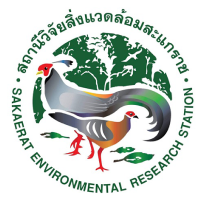Keywords :
King Cobras; Post-capture Photographic
บทคัดย่อ :
Identifying individuals with natural markings is increasing in popularity to non-invasively support
population studies. However, applying natural variation among individuals requires
careful evaluation among target species, snakes for example have little validation of such
methods. Here we introduce a mark-free identification method for King Cobras (Ophiophagus
hannah) from the Sakaerat Biosphere Reserve, in northeast Thailand using both subcaudal
scale pholidosis (scale arrangement and number) and unique ventral body markings
to distinguish individuals. This project aims to evaluate the impact of observer error on individual
identification. Observers of varying expertise, will distinguish between King Cobra
individuals using identifying photographs from a previous study. We will ask randomly
assigned observers to distinguish individuals via: 1) subcaudal pholidosis, 2) ventral body
markings, and 3) combination of both measures. Using Bayesian logistic regression, we will
assess the probability observers correctly distinguish individuals. Based on exploratory
observations, we hypothesise that there will be a high probability of correct identifications
using subcaudal pholidosis and ventral body markings. We aim to stimulate other studies
implementing identification techniques for scrutinous assessment of such methods, in order
to avoid subsequent errors during long-term population studies.
เอกสารอ้างอิง :
Jones, M. D., Marshall, B. M., Smith, S. N., Christie, J. T., Waengsothorn, S., Artchawakom, T., ... & Strine, C. T. (2020a). Can post-capture photographic identification as a wildlife marking technique be undermined by observer error? A case study using King Cobras in northeast Thailand. Plos one, 15(12), e0242826.



